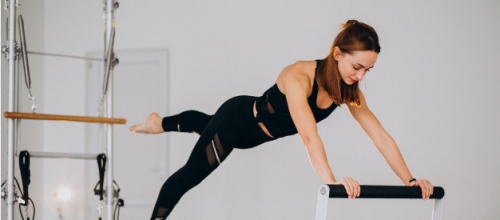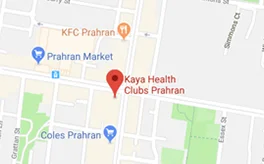
Using Pilates for Rehabilitation and Physical Therapy
So much more than just an amazing workout for the body and the mind, Pilates Prahan is recommended by physicians all around the world as one of the best forms of rehabilitation treatment and physical therapy after an injury. In fact, the Pilates method itself was invented for the very purpose of rehabilitation, by Joseph Pilates -a physical culturalist from Germany.
Pilates interweaved his knowledge of bodybuilding, yoga, circus, calisthenics, gymnastics, skiing, Boxing Classes, and martial arts, with Eastern practices and Zen Buddhism, to design a series of vigorous physical exercises which target specific muscle groups and correct muscular imbalances. This helps to improve posture, coordination, balance, strength, and flexibility.
Some of the first people treated by Pilates were soldiers returning from war and dancers such as Martha Graham and George Balanchine. Joseph first began testing the Pilates method at an army camp where he worked as a nurse/caretaker to many soldiers healing from war-derived diseases and other physical injuries.
It was here, that he began devising equipment to help rehabilitate his ‘patients’, creating exercises that can take patients from the early stages of rehabilitation to the long-term goal of a conditioned, efficiently functioning body.
By strengthening the deepest muscles of the core, optimizing alignment, and creating correct movement patterns, Pilates Prahran can help to strengthen parts of the body that have been injured, whilst also helping to prevent re-aggravation of those injuries and the development of new ones.
Why is Pilates good for rehabilitation?
The reason Pilates is globally chosen as such an effective choice for physical therapy is that it offers a completely dynamic workout that focuses on strengthening the body, through concentration, centring, control, precision, fluidity, breath work, and flow. No matter where you perform Pilates, these factors remain the same and help develop and strengthen your body from your core outwards.
Tackles Muscle Imbalance
A lot of factors contribute to muscle imbalance in your body. Factors such as body posture, the way you walk, sit, bend, sleep, run or workout, play a huge role in muscle imbalance. We are often careless with the way we move our body during our everyday life, or even during exercise, which can put a lot of pressure on some of our muscles and lead to injury.
Incorrect movement can mean that our muscles tend to weaken over time and lead to imbalance. Muscular imbalance means that your body is more susceptible to injuries. For example, if you don’t know how to support your body properly while you are performing everyday tasks, you can put an immense amount of pressure on the spine, while incapacitating the pelvic muscles. This imbalance in the muscles will make your body more susceptible to muscle pulls, strains or even worse injuries.
Strengthens your core:
Core work is a central part of every Pilates Prahran class. All Pilates’ moves are initiated by your core, also known as your Pilates powerhouse, and during Pilates Prahran classes students are encouraged to source their energy from their centre, to help muscles work more efficiently. Many movements and postures we do during class require you to hold your powerhouse in place while moving your limbs in different directions. This challenges your body with balance and stability and strengthens your core over time which helps support the rest of the body, preventing further injury.
Adaptable to patient’s needs:
One of the reasons Pilates Prahran is so good for treating injuries is because of how adaptive it is and how it can be personally tailored to support the patient’s movement goals and tolerances. It is also safe, not requiring unnatural weights which may endanger, and not support, the rehabilitation process.
Corrects your posture
Sitting down at a desk all day or spending so much time staring down at your smartphone can lead to poor posture and asymmetrical muscle development, where some muscles become weaker than others. Pilates Prahran helps restore the natural curves of the spine by strengthening those underdeveloped muscles and increasing mobility through the back of the body, correcting your posture and helping you stand with more stability.
Supports your spine
A lot of Pilates Prahran exercises involve spine lengthening, which helps to restore muscular imbalances by teaching proper alignment. This teaches you how to stabilize your body using your core, rather than straining your lower back, which helps ease back pain, as well as prevents injury and incorrect movement.
Helps with knee injuries
Whether you have a knee injury resulting from an acute injury, or overuse due to poor biomechanics or a muscle imbalance, Pilates is a great rehabilitation method to treat knee injuries. Correct knee alignment relies on a strong core, quadriceps, and gluteus muscles. Pilates Prahran provides a low impact, controlled environment to isolate these muscle groups and strengthen them over time, thus supporting the recovery of your knee and allowing space for the inflammation to go down.
Always treat the injury with an instructor
Before you plan on making Pilates your preferred workout to treat an injury, it is crucial to understand that there is a huge difference between Pilates that is performed as an exercise and Pilates that is performed as therapy.
The principles of Pilates are great for rehabilitation from an injury, but if they are not applied in conjunction with the precise therapy techniques, they can aggravate the injury. Ensure you are practicing with certified Pilates’ instructor who is well aware of your injury, so they can help tailor an exercise program for you and best support your recovery.
Can you do Pilates every day?
For those of you who have well and truly fallen in love with Pilates Prahran, it’s perfectly fine to practice every day. However, to stay strong and injury-free, you might need to modify your workout to suit your limits and listen to what your body is communicating with you each day. That may mean lighter springs on days you’re sore, fewer reps when a flare-up is bothering you, or less frequent workouts if you’re rehabilitating after an injury.
Just ensure you are listening to your body, giving yourself adequate rest in between and varying the intensity and focus of your workouts, which is something we tend to do at Kaya Health Clubs anyway. Your body and injury need adequate time to restore in between each class, so don’t be afraid to slow things down. Your Pilates’ instructor will be able to tailor a specific exercise program that can best suit support and enhance recovery. Remember that regaining strength and being patient with your body’s natural rehabilitation process is the ultimate goal.










